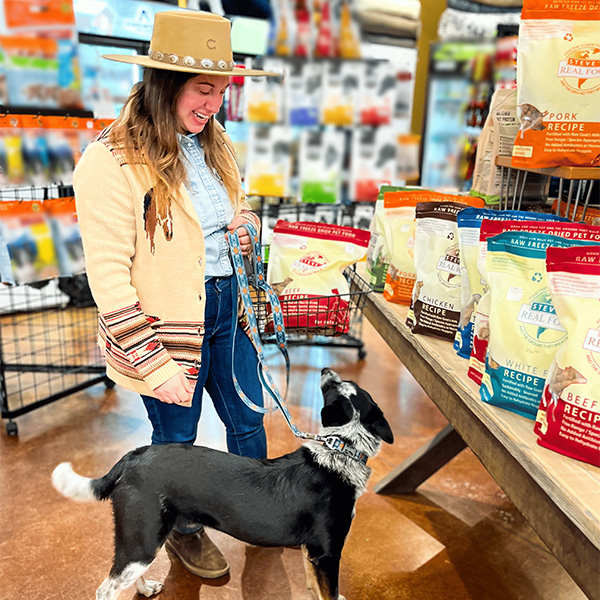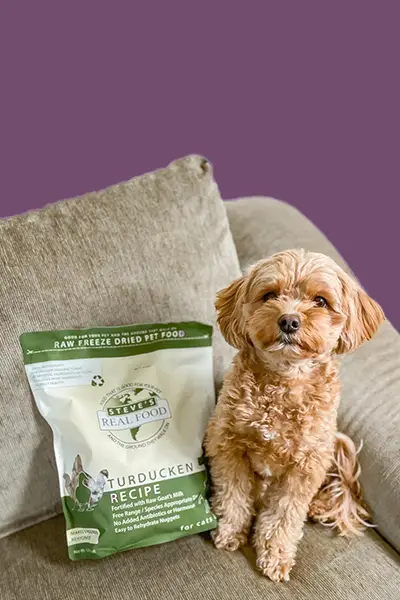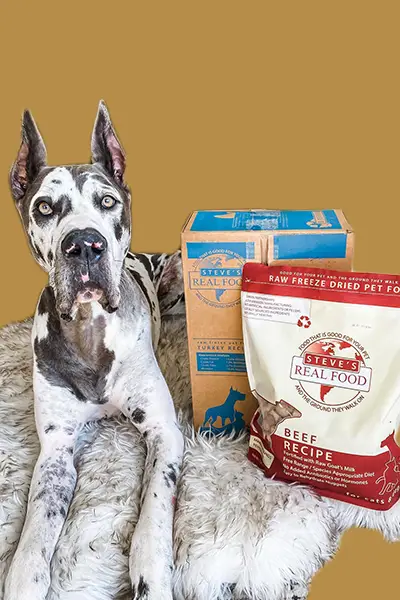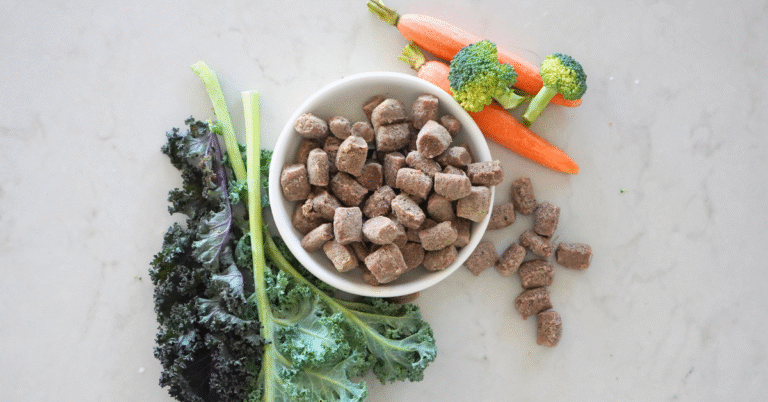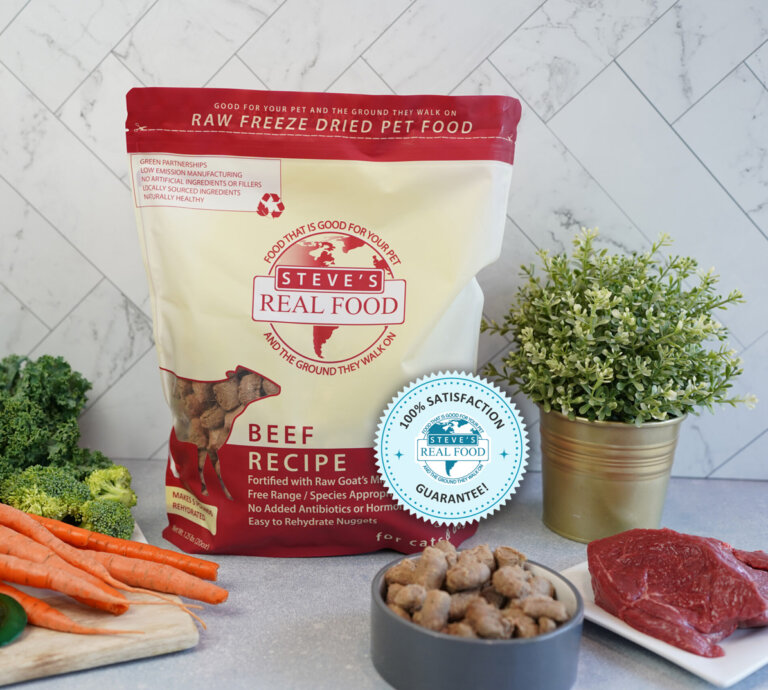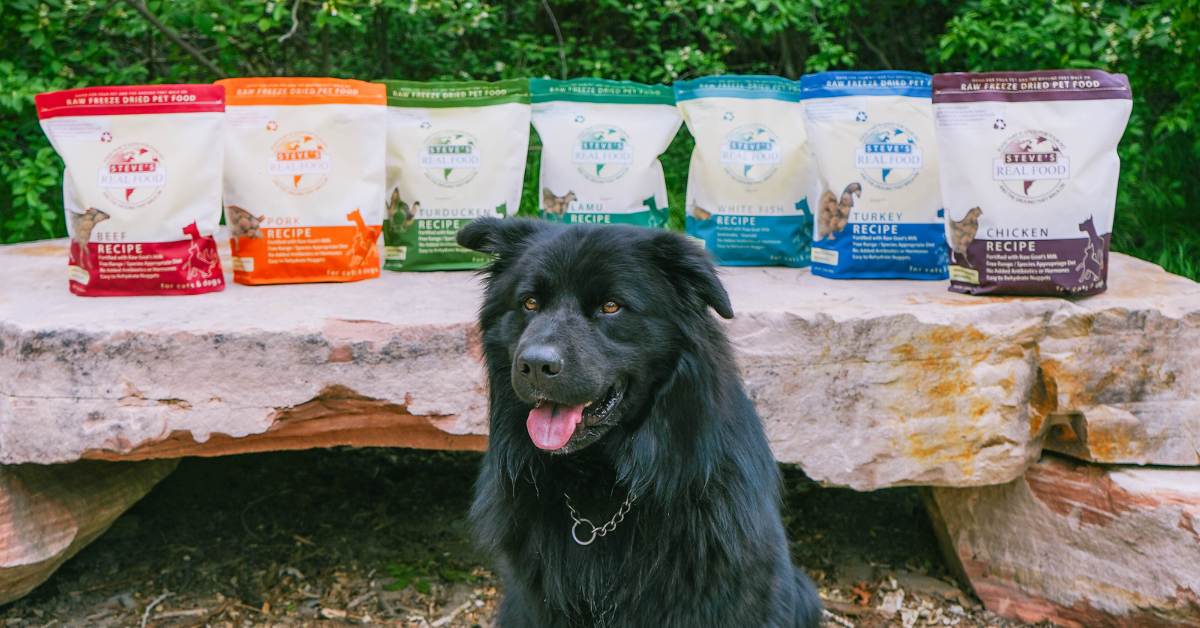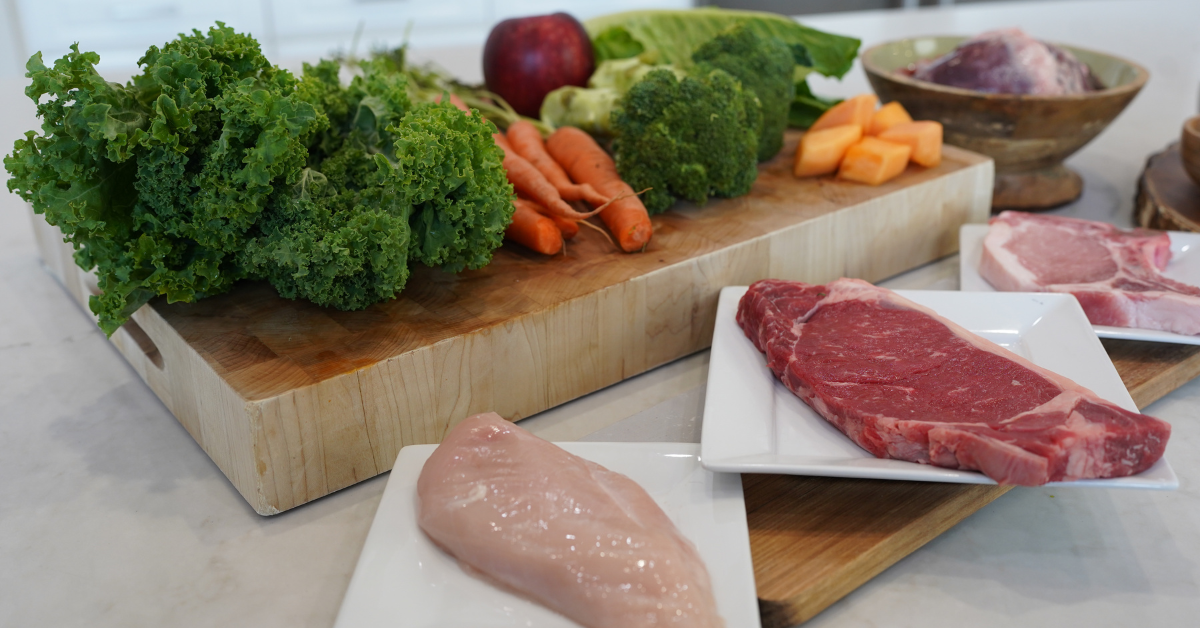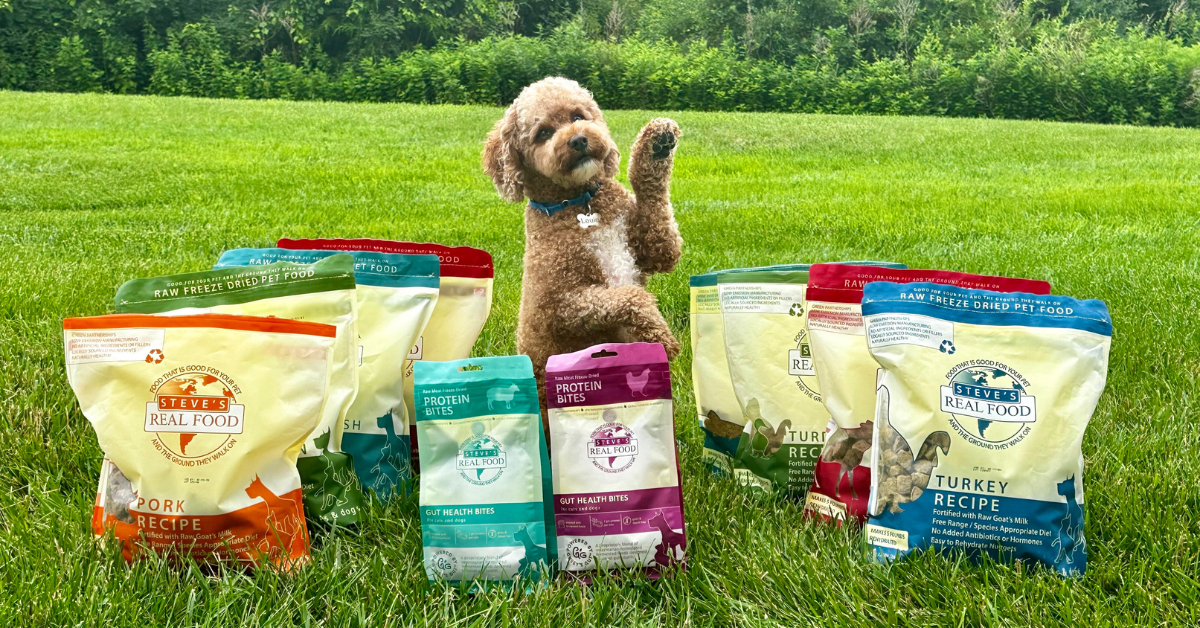What is Rotational Feeding?
Rotational feeding is a dietary strategy in which you regularly vary the types of foods pets consume to provide a more balanced and comprehensive nutritional profile. Rotational feeding includes rotating foods, toppers, even types of food such as wet and dry. There are several benefits of providing variety in your pet’s diet:
Higher Variety of Nutrient Profiles
Rotational feeding ensures your pet receives a broad spectrum of nutrients, which is something a static diet usually cannot provide. By varying your pet’s diet with different proteins, fruits, vegetables, and grains, you provide a wide range of essential vitamins, minerals, amino acids, and fatty acids, contributing to their overall well-being. Different protein sources, such as chicken, beef, and fish, offer essential amino acids crucial for muscle development, immune function, and overall health. Fruits, vegetables, and grains contribute unique vitamins and minerals, like sweet potatoes packed with vitamin A and potassium, and spinach providing iron and vitamin K, supporting everything from bone health to red blood cell production. Additionally, omega-3 and omega-6 fatty acids, found in fish oil, poultry, and certain plant oils, maintain healthy skin, a shiny coat, and optimal cognitive function.
Helps Prevent Picky Eating
Offering the same food every day can lead to disinterest and even refusing to eat. When pets become bored with their food, they may start to exhibit picky eating behaviors. They might only eat certain parts of their food or refuse to eat altogether, which can lead to nutritional imbalances and health issues.
Introducing a variety of foods can stimulate a pet’s appetite. Different flavors, textures, and aromas stimulate their senses and enhance their overall eating experience. The anticipation of a new flavor or texture can motivate pets to eat more eagerly and maintain a healthy appetite. Rotational feeding encourages pets to eat more consistently and heartily.
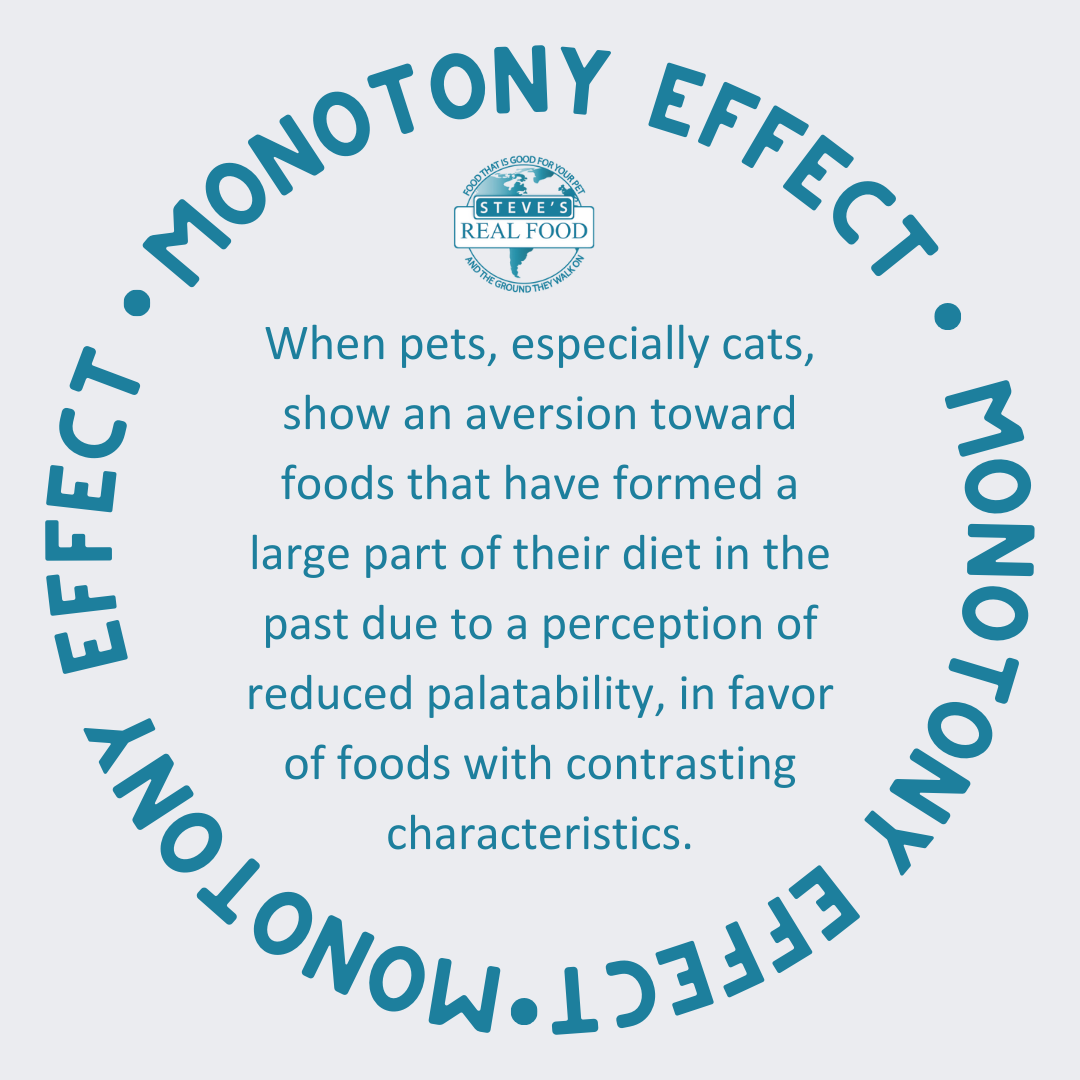
Provides Diversity in Gut Bacteria
The gut microbiome is a complex community of microorganisms that reside in the digestive tract. These microorganisms play crucial roles in breaking down food, synthesizing vitamins, protecting against pathogens, and regulating the immune system. A diverse and well-balanced gut microbiome is associated with numerous health benefits, while a lack of diversity can lead to digestive issues, immune dysfunction, and even chronic diseases.
A diverse microbiome is good for a number of reasons such as:
- Improved Digestion: A diverse microbiome enhances the breakdown and absorption of the gut, leading to better digestion and nutrient utilization. Pets are less likely to experience gastrointestinal problems like bloating, gas, and diarrhea when their gut bacteria are balanced and varied.
- Stronger Immune System: The gut microbiome plays a critical role in the development and function of the immune system. A diverse bacterial population can better defend against pathogens and reduce the risk of infections and inflammatory diseases.
- Better Overall Health: A healthy gut microbiome contributes to overall health by producing essential vitamins, aiding in detoxification processes, and supporting mental health through the gut-brain axis. Pets with a diverse gut microbiome tend to have shinier coats, healthier skin, and more energy.
Reduces the Risk of Food Sensitivities Developing
Food sensitivities occur when a pet’s immune system reacts adversely to certain ingredients. Unlike food allergies, which typically provoke an immediate immune response, food sensitivities can cause delayed reactions, making them harder to diagnose. Common symptoms of food sensitivities include gastrointestinal issues like vomiting and diarrhea, as well as skin problems such as itching, redness, and inflammation. One strategy to lower the risk of developing these sensitivities is rotational feeding.
How Rotational Feeding Helps Prevent Food Sensitivities
- Promoting Immune Tolerance: Regularly varying the diet helps the immune system adapt to a broader range of proteins and other food components. This diversity can promote immune tolerance, where the immune system becomes accustomed to different ingredients and is less likely to react adversely.
- Balanced Nutrient Intake: Different foods offer different nutrient profiles, which contribute to overall health and immune function. A varied diet ensures pets receive a balanced intake of vitamins, minerals, and other essential nutrients, supporting a robust immune system that is less prone to developing sensitivities.
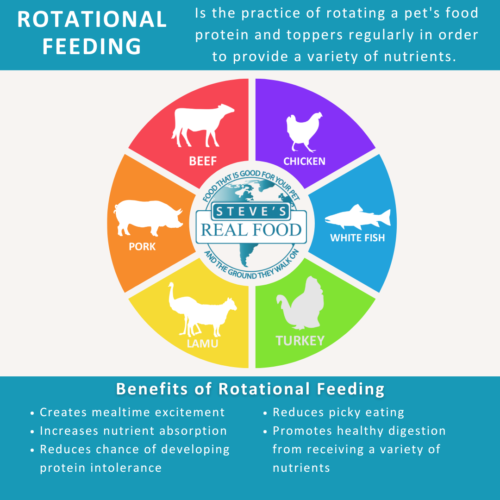
How to Practice Rotational Feeding with Your Pet
To successfully implement rotational feeding and prevent boredom, pet owners should consider the following tips:
- Gradual Transitions: Introduce new types of foods slowly to avoid digestive upset. Start by mixing a small amount of the new food with the current food and gradually increase the amount. If you rotate proteins within the same brand, a transition may only be needed if your pet is sensitive to changes. A transition is recommended if you are changing brands. Check out our transition guide for more info and tips on changing foods.
- Observe Preferences: Pay attention to your pet’s preferences to different foods. Some pets might prefer certain flavors of proteins or textures, which can guide future food choices in the rotation.
- Regular Changes: Aim to rotate diet whenever you re-stock your pet’s food. The frequency can vary depending on your pet’s preferences and how they adapt to new foods. You should try to rotate through all the proteins your pet does well on.
Rotational feeding is a great way to ensure your pet receives a broad spectrum of nutrients, helps prevent picky eating, supports a diverse gut microbiome, and reduces the risk of developing food sensitivities. By regularly varying the types of foods and proteins, you provide a well-rounded diet that keeps mealtime exciting and promotes overall health. Mix things up with different proteins, fruits, and vegetables to keep your furry friend happy and healthy.
 Beef
Beef Chicken
Chicken Whitefish
Whitefish Pork
Pork Lamb
Lamb Turkey
Turkey Turducken
Turducken All Protein
All Protein Beef
Beef Chicken
Chicken White Fish
White Fish Pork
Pork Lamb
Lamb Turkey
Turkey Duck
Duck All Products
All Products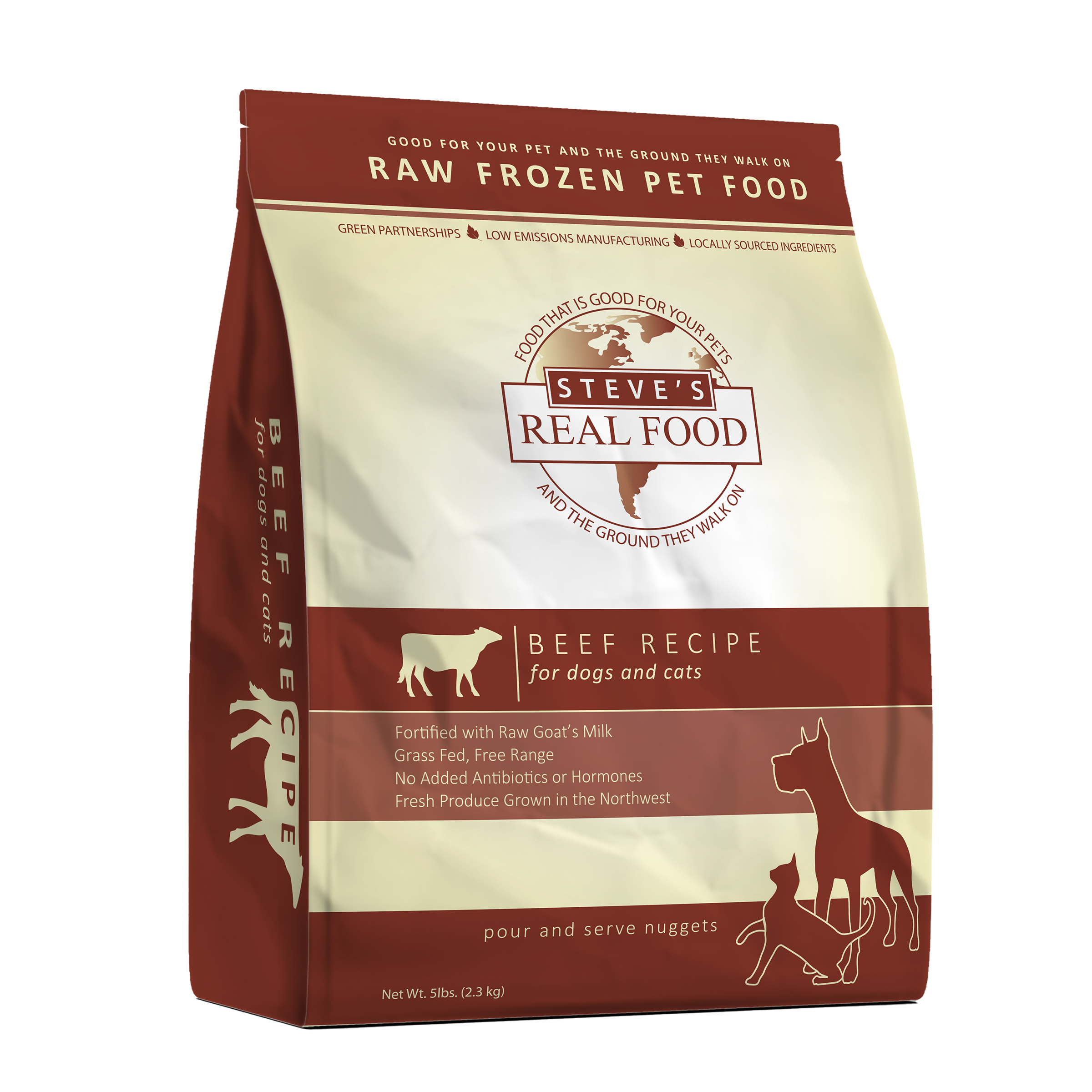 Frozen Raw Pet Food
Frozen Raw Pet Food
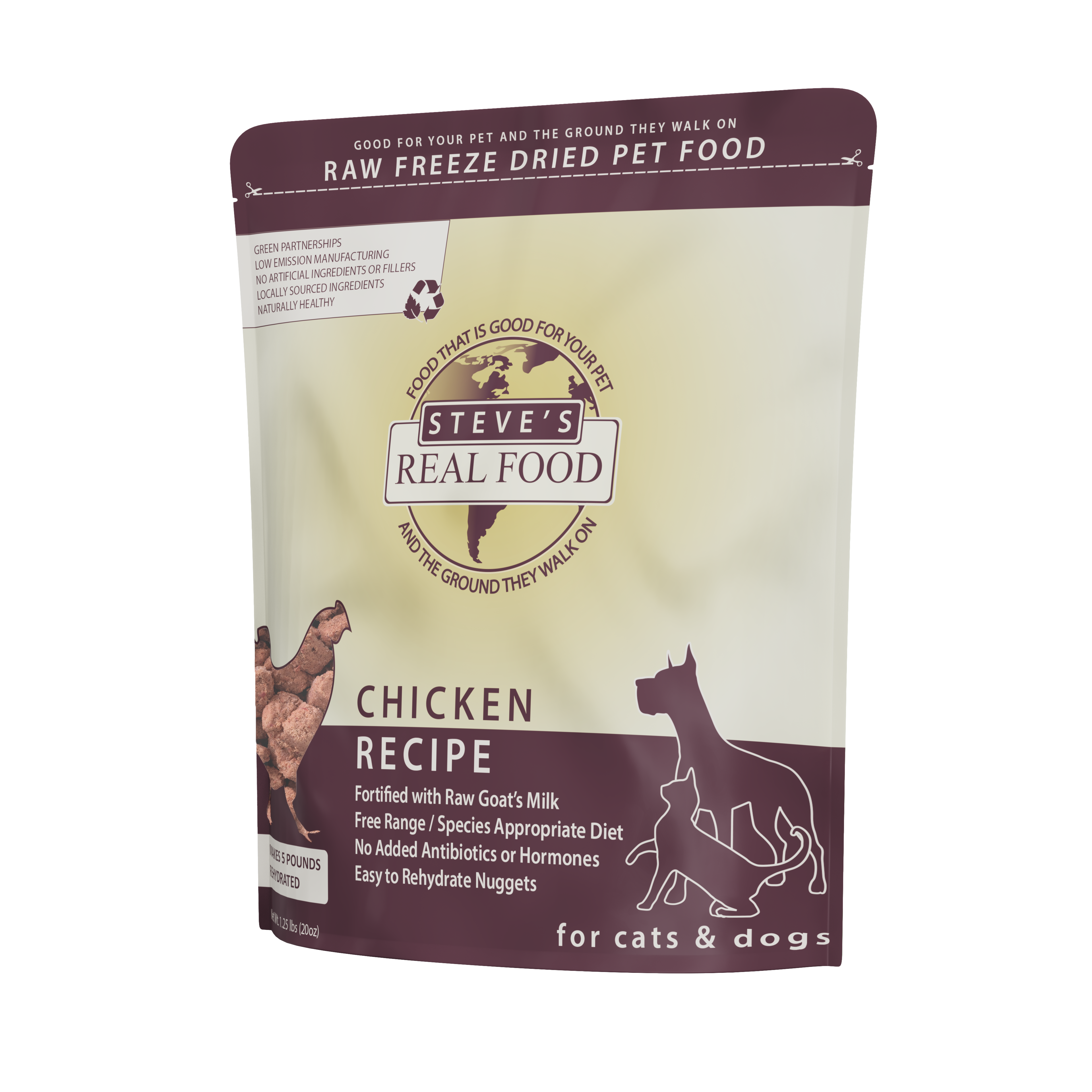 Freeze Dried Raw Pet Food
Freeze Dried Raw Pet Food
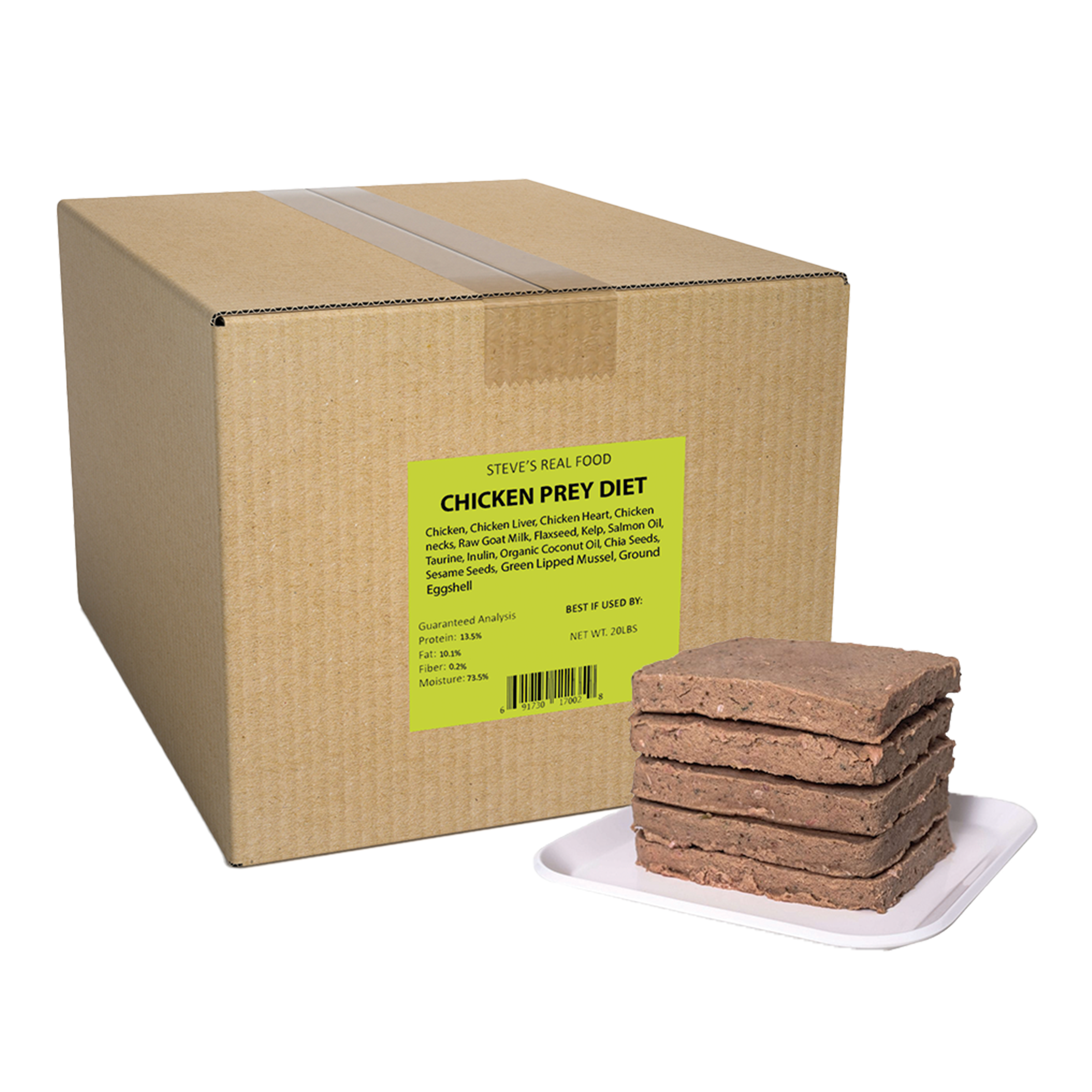 Frozen Prey Diet
Frozen Prey Diet
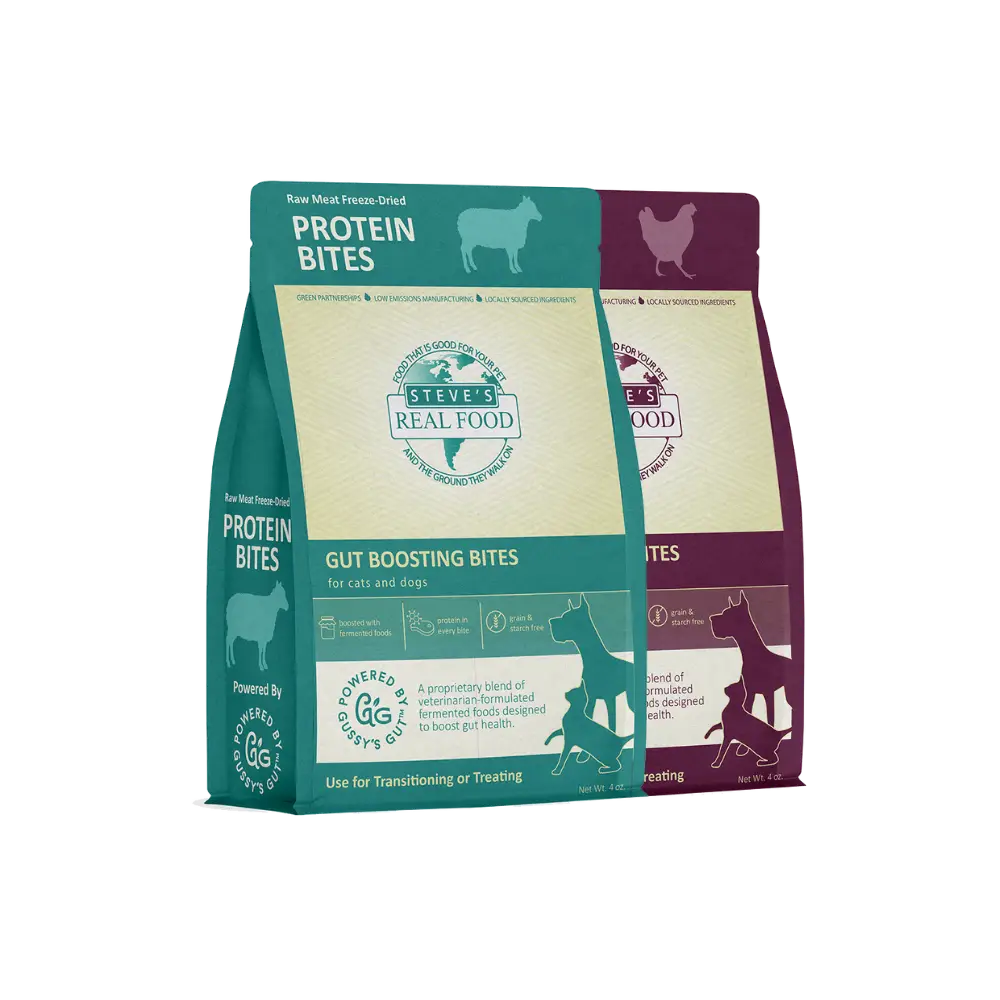 Freeze Dried Protein Bites
Freeze Dried Protein Bites
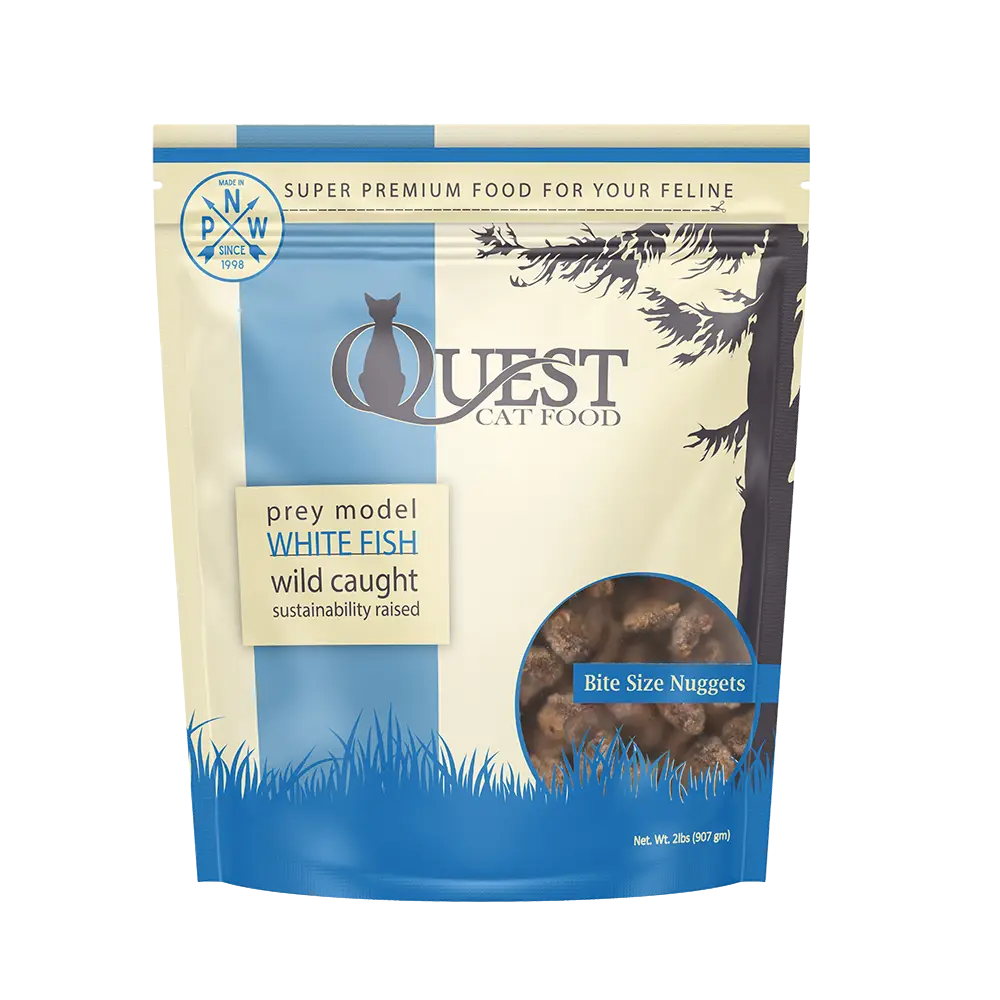 Frozen Quest
Frozen Quest
 Freeze Dried Quest
Freeze Dried Quest
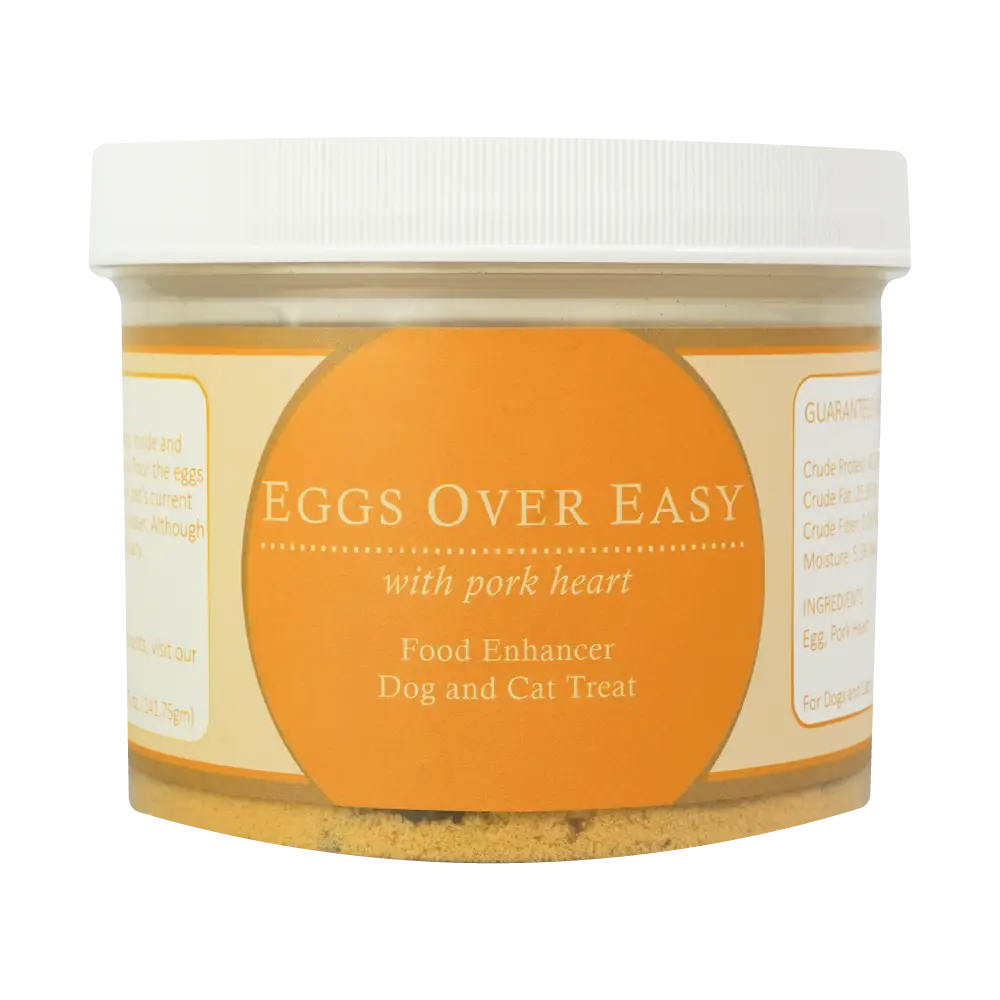 Eggs over Easy
Eggs over Easy
 Steve's Merch
Steve's Merch 